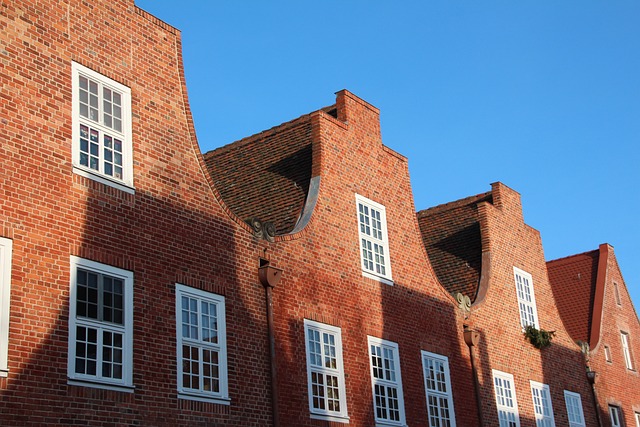Owning a property is a significant investment, and like any investment, it requires proper care and maintenance. Inspections are an essential part of this process as they help identify issues that need to be addressed before they become major problems. However, managing property repairs and maintenance after inspections can be a daunting task, especially if you don’t have the right knowledge and experience.
In this article, we will discuss some practical tips and strategies for managing property repairs and maintenance after inspections. From prioritizing repairs to hiring the right contractors, we’ll cover everything you need to know to keep your property in top condition and protect your investment. Whether you’re a seasoned property owner or a new investor, this article will provide you with valuable insights to help you manage your property repairs and maintenance more effectively.
- Prioritize Repairs
After an inspection, you’ll likely receive a list of issues that need to be addressed. However, not all repairs are created equal, and some may be more urgent than others. Prioritizing repairs can help you address the most pressing issues first and avoid costly repairs down the line. For example, if there’s a leak in the roof, addressing it immediately can prevent water damage to the property’s interior.
- Create a Repair Schedule
Once you’ve prioritized repairs, it’s time to create a repair schedule. This schedule should outline when repairs will be made and who will be responsible for making them. Creating a schedule helps ensure that repairs are made promptly and efficiently. It also helps you avoid overlapping repairs, which can lead to unnecessary expenses.
- Hire the Right Contractors
When it comes to property repairs and maintenance, it’s essential to hire the right contractors. Look for contractors who have experience working with properties similar to yours and have a good reputation in the industry. You can also ask for references and check their credentials to ensure that they’re qualified for the job.
- Get Multiple Quotes
Before hiring a contractor, it’s essential to get multiple quotes. This allows you to compare prices and ensure that you’re getting a fair deal. However, don’t always go for the cheapest option. Sometimes, it’s worth paying a little more for a contractor who has more experience or a better reputation.
- Keep Records
Keeping records of all repairs and maintenance work is crucial. This includes receipts, invoices, and work orders. Having these records helps you keep track of expenses, monitor contractor performance, and plan future repairs and maintenance. It’s also essential for tax purposes and can help you make informed decisions about the property’s future.
- Conduct Regular Inspections
Regular inspections are crucial to identifying issues before they become major problems. This includes inspecting the property’s exterior, interior, and systems like plumbing, heating, and electrical. Conducting regular inspections helps you stay on top of maintenance needs and avoid costly repairs down the line.
- Follow Up with Tenants
If the property is leased, it’s essential to follow up with the tenants after the repairs and maintenance have been completed. This is to ensure that the tenants are satisfied with the work that has been done. Additionally, tenants may have noticed other repairs or maintenance issues that were not picked up during the initial inspection. Therefore, it’s important to encourage tenants to report any issues as soon as they notice them.
Expected Timeline for Completing Repairs and Maintenance Tasks
When it comes to repairs and maintenance, it’s important to have a realistic timeline for completing tasks. Some repairs may take longer than others, and it’s essential to communicate this to tenants or property owners. Providing an estimated timeline for completion helps manage expectations and allows tenants or property owners to plan accordingly. It’s also essential to have a contingency plan in place in case there are unexpected delays.
Communication Protocols for Providing Updates on Repairs and Maintenance Progress
When it comes to managing property repairs and maintenance, clear and timely communication is essential to ensure that tenants or property owners are kept informed throughout the process. Here are some communication protocols you may want to consider:
- Provide an initial update: After a repair or maintenance request has been submitted, provide an initial update to the tenant or property owner to confirm that the request has been received and is being addressed. This can help set expectations and reduce any concerns or anxiety.
- Keep the lines of communication open: Throughout the repair or maintenance process, keep the lines of communication open by providing regular updates on the progress being made. This can help build trust and maintain a positive relationship with tenants or property owners.
- Be transparent: If there are any unexpected delays or issues that arise during the repair or maintenance process, be transparent about them and provide regular updates on what is being done to address them.
- Use multiple channels of communication: Consider using multiple channels of communication, such as email, phone, or text message, to ensure that tenants or property owners receive updates in a timely manner.
- Provide a final update: Once the repair or maintenance work has been completed, provide a final update to the tenant or property owner to confirm that the work has been done and to address any concerns they may have.
Who is Responsible for Overseeing Repairs and Maintenance?
Managing repairs and maintenance after inspections requires someone to oversee the entire process. Depending on the size of the property, you may need to hire a property manager or maintenance staff to handle repairs and maintenance tasks. A property manager can oversee repairs and maintenance tasks and communicate with tenants or property owners. A maintenance staff can handle day-to-day repairs and maintenance tasks such as fixing leaky faucets or changing light bulbs.
Concluding Thoughts
Good property maintenance is essential for any property owner or manager. Property inspections for property maintenance are critical in identifying any repairs and maintenance issues that need attention. Prioritizing repairs and maintenance and obtaining quotes before hiring contractors can help minimize repairs and maintenance expenses. A property maintenance plan should be put in place to ensure that the property is maintained to a high standard.
Property management and maintenance go hand in hand, and property owners or managers must be proactive in ensuring that repairs and maintenance are promptly addressed. By working with the best property maintenance company, property owners or managers can ensure that their properties are well-maintained and provide a safe and comfortable living environment for their tenants. Overall, property maintenance and repairs are an essential part of property management, and it’s essential to know what property maintenance involves and what a property maintenance company does to ensure that the property is well-maintained.





